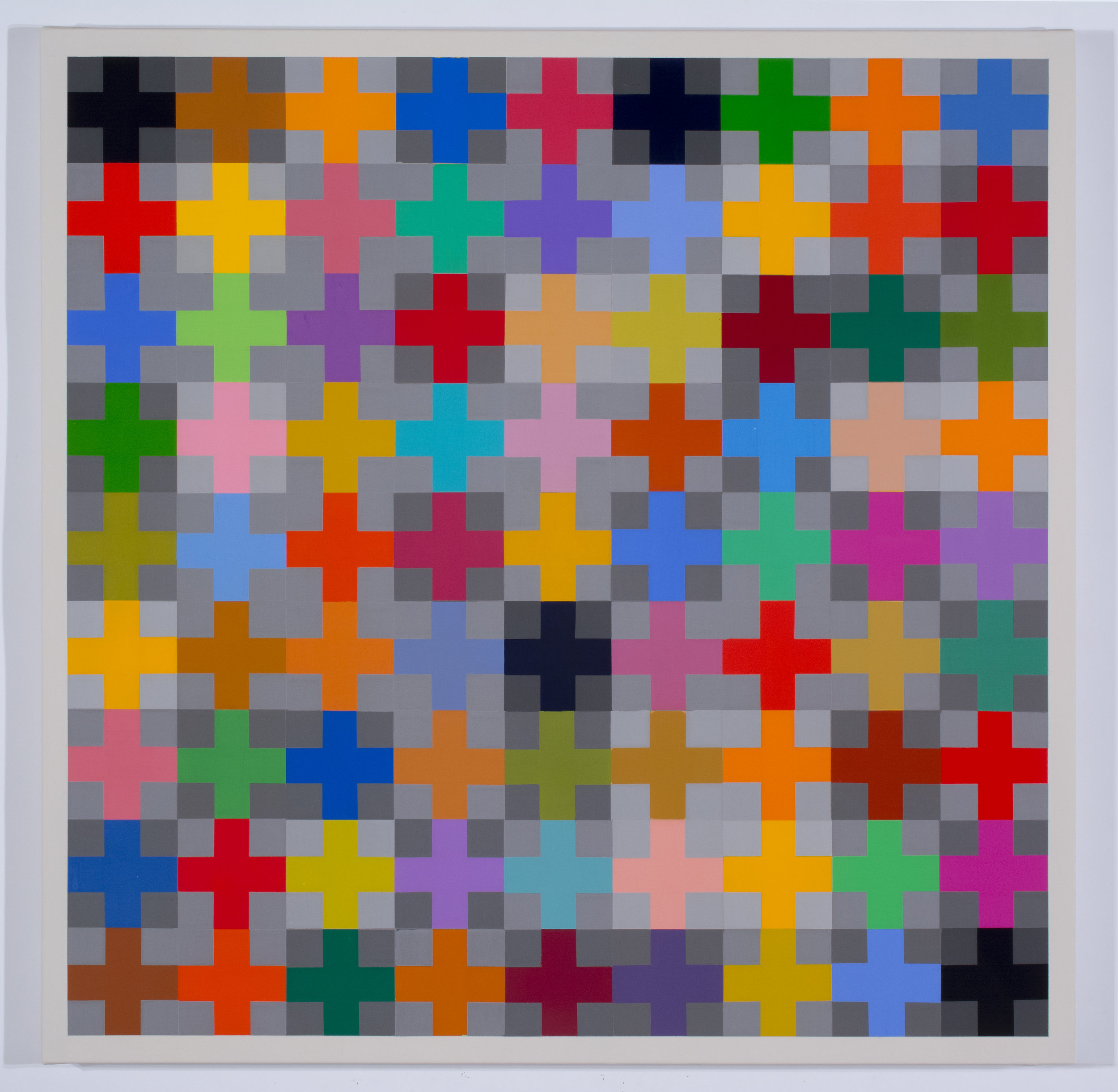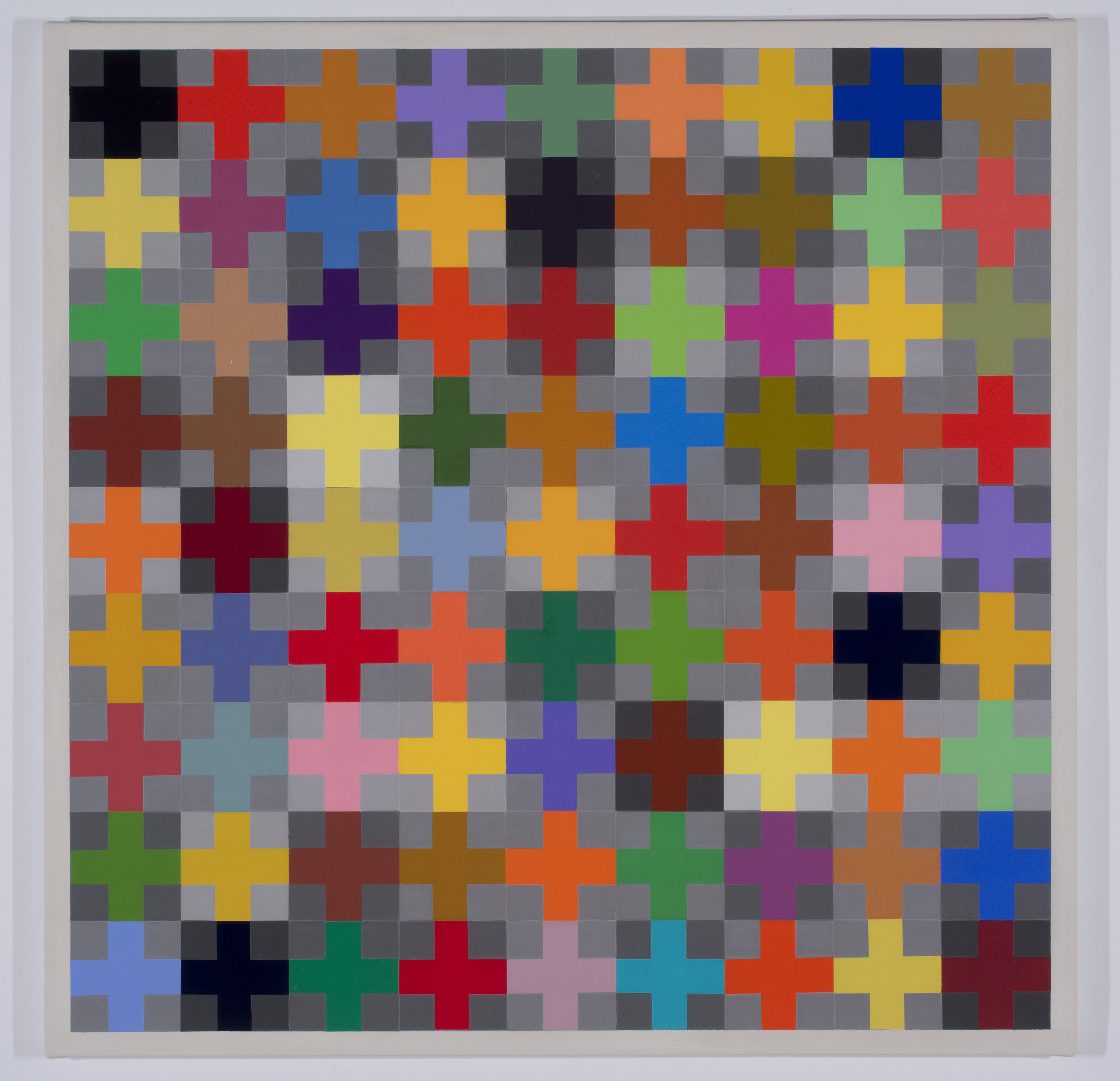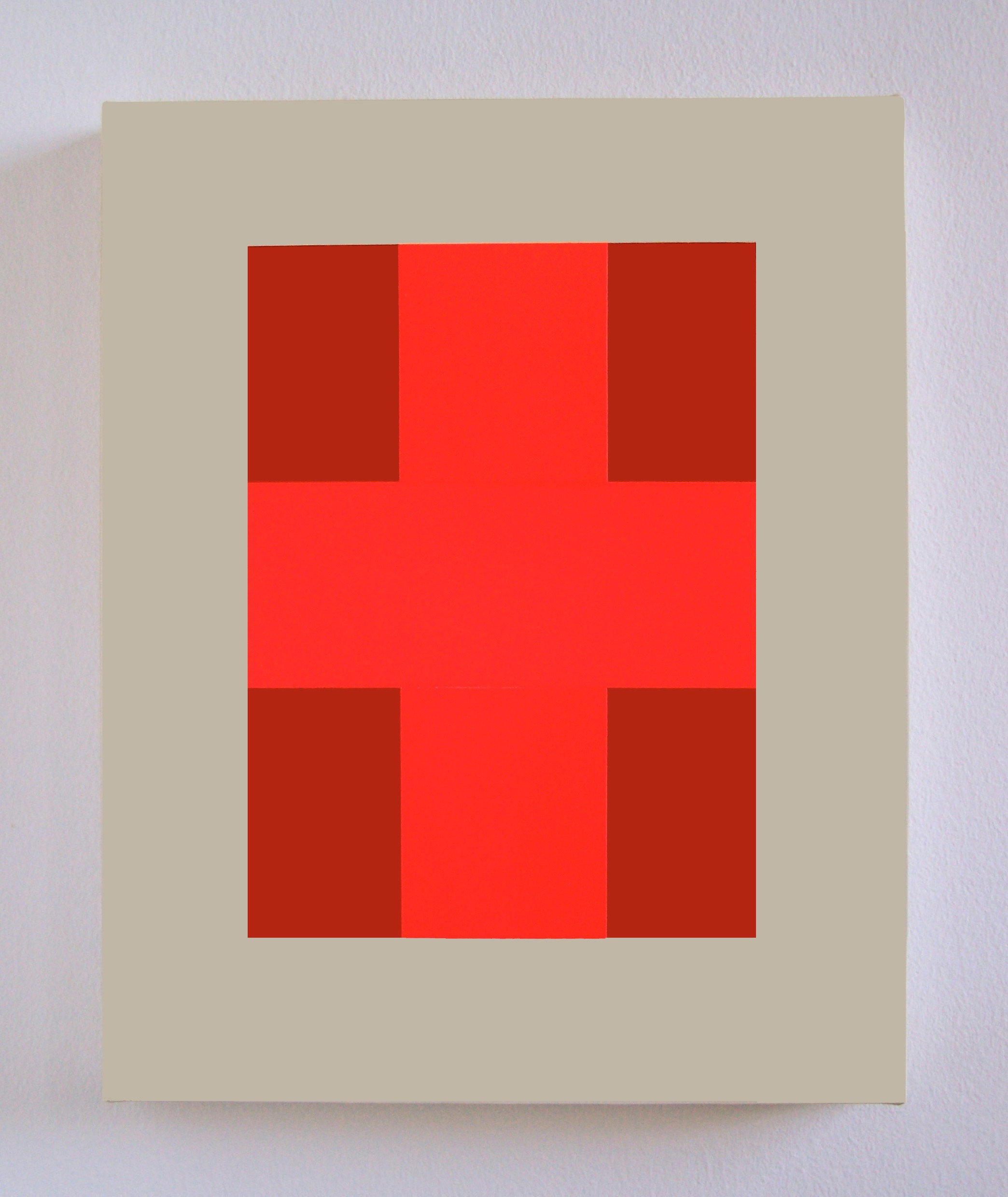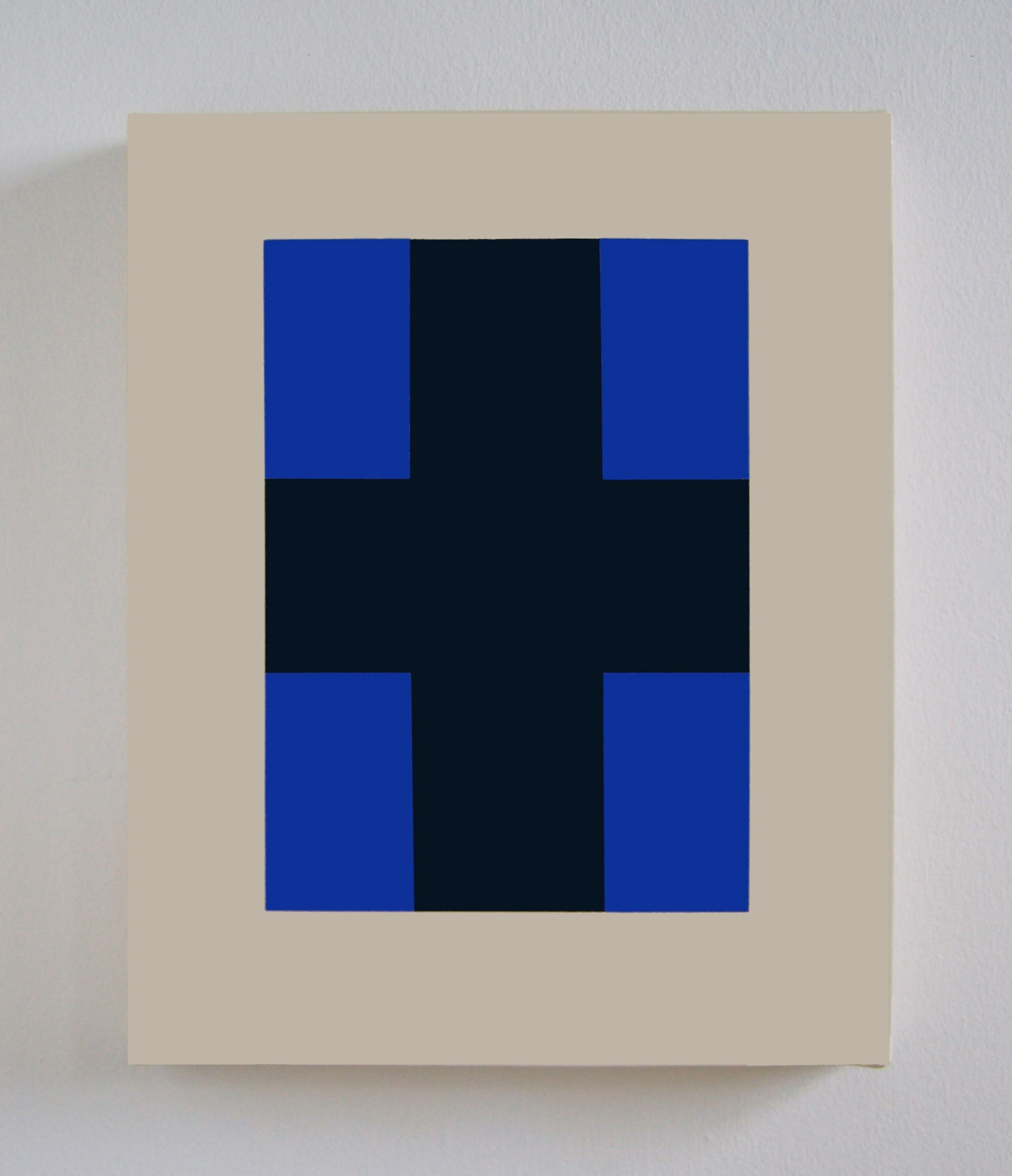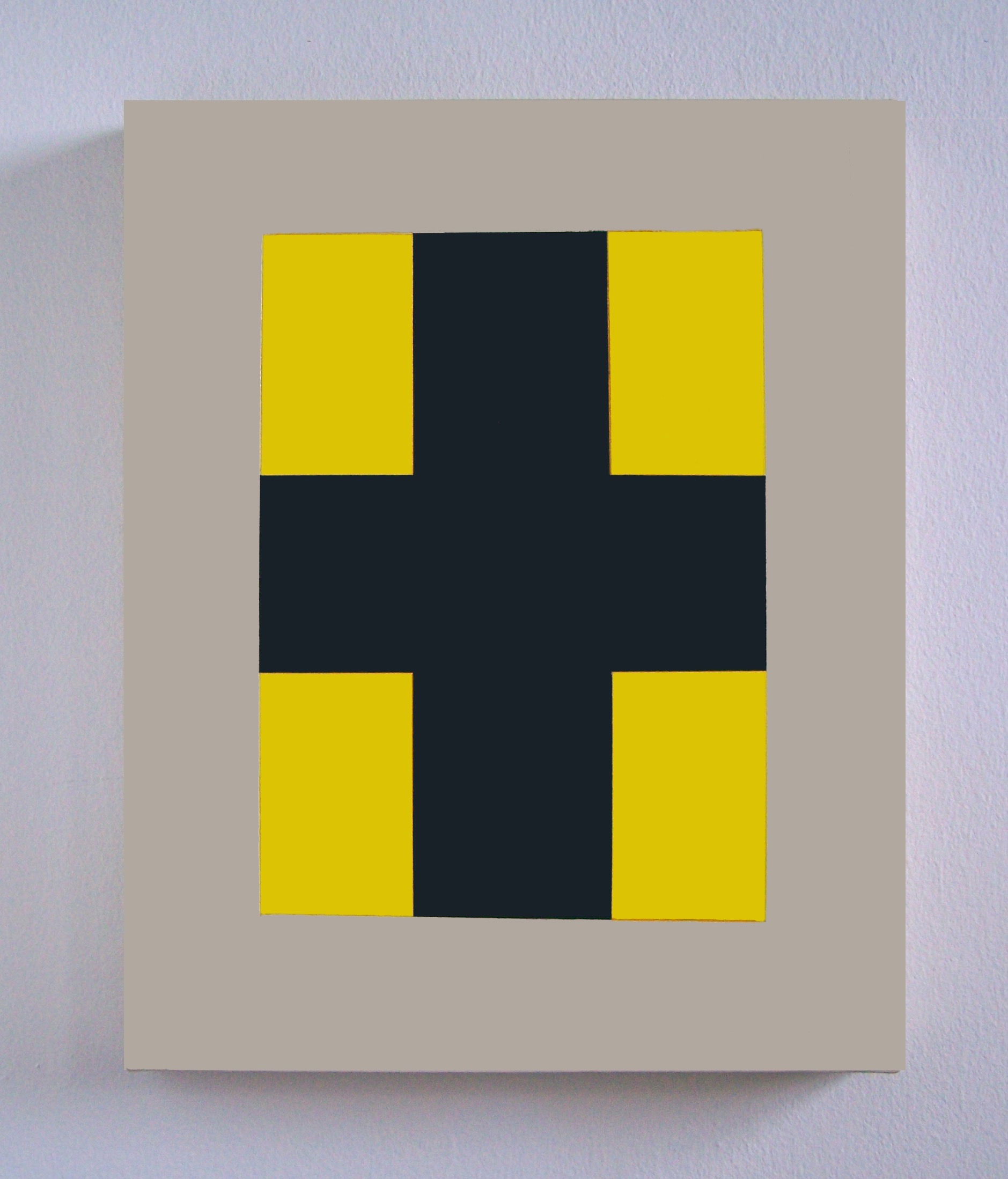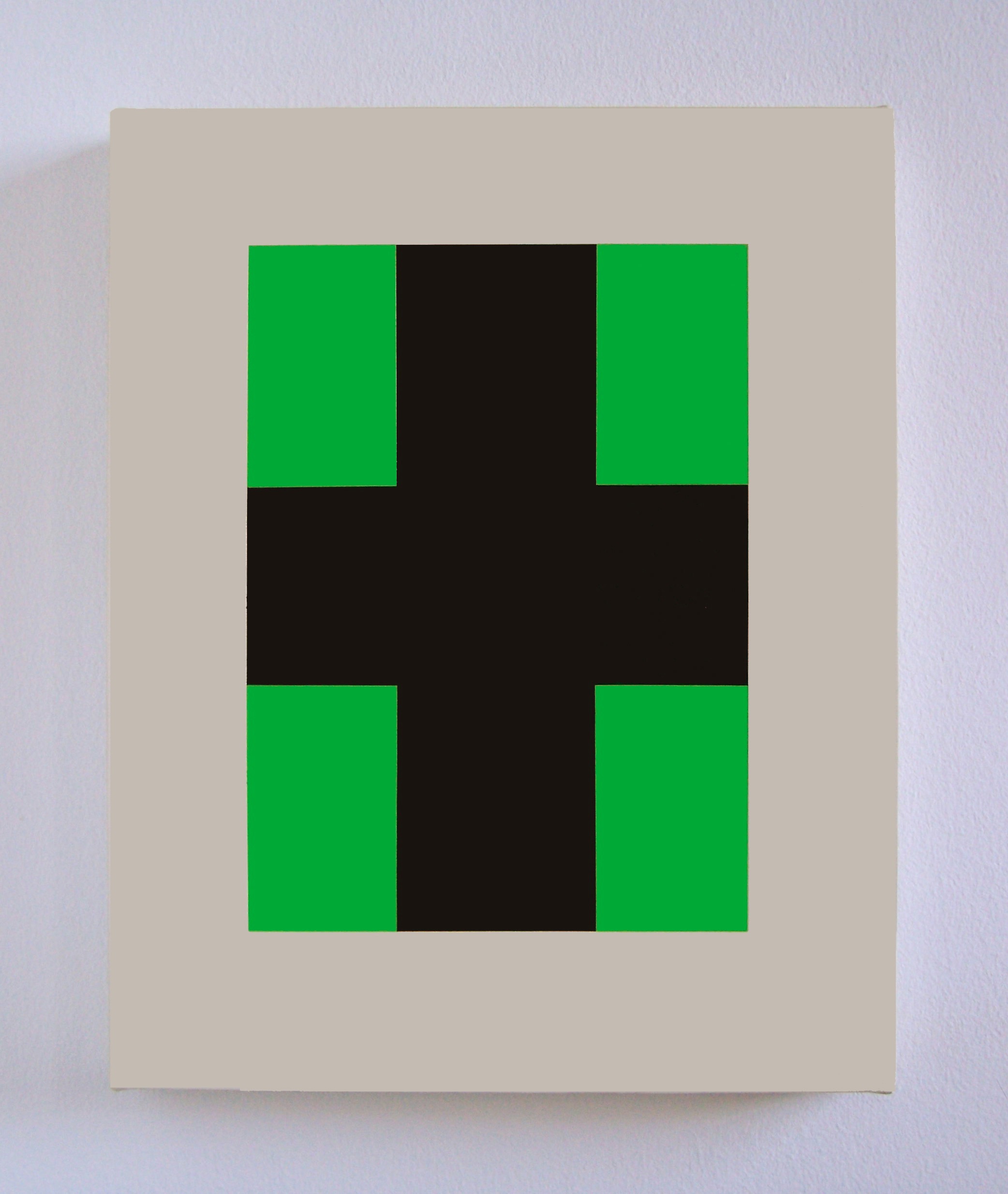Crosses (2010 - present)
Ferry’s paintings comprise rectangular fields of colorful, quilt-style crosses filling gray squares. Their immediate Op-Art impact is strong enough to allow the hurried viewer a somewhat satisfying but missing-the-point, Cliff’s Notes comprehension.
They look like squares of repeating forms, but they aren’t — and Ferry’s insistence on oblong rectangles makes all the difference.
Whether quilting logic was the motivation hardly matters. Some of Ferry’s works employ a 7-by-8-inch pattern, while others place a square on a slightly wider than higher canvas. Although I am not sure I like the blank canvas margins, I admire the ambitious project they reveal and deliver. Either way, the paintings impressively transgress their modular logic and relate to landscape.
While some of Ferry’s acrylic paintings might look like grouted tiles close up due to their taped-off and carved segments, the opticality of their seemingly obvious colors defies flatness or mathematical logic, and so can come into their own as compositions with a specific orientation in space.
In fact, the rows of Ferry’s crosses strike me as similar to American military cemeteries — not for any grim nostalgia, but because of their noble pageantry.
Moreover, when I tried to parse the cemetery reading, I came to realize that every one of Ferry’s colors is different. If there are four greens or five blues or three yellows on a canvas, none repeats, and the varied grays only reinforce this view.
While this reading might be completely astray of Ferry’s intentions, the idea that each cross had its own unique color and gray struck me as a beautifully compassionate gesture for the multitudes of individuals lost in service to our societal and cultural greater good.
Daniel Kany
September 18, 2011
Ferry’s cross paintings explore the cruciform for its own formal properties and chromatic possibilities, yet there is no denying the religious symbolism of the crosses, especially given both their vertical orientation and that Ferry’s father is a Christian minister.
The fact Ferry’s father is a minister probably explains some of his attraction to the cruciform, but it does not explain it away. “Crosses are definitely a motif I’m familiar with, an image I grew up with, one I felt connected to,” he says, “but I’m not sure at this point what that connection is.”
“Crosses appear in contemporary paintings often without there being specific religious connotations,” notes Ferry. “I’m satisfied with the cross as a formal centering device and welcome associations that the viewer wishes to bring to the work.”
For his recent paintings of single crosses he sites a comment painter Katherine Bradford once made as informing his thinking about his own work. “I like to think of works of art,“ Bradford said, “as having the same drawing power as the lighted hearth in the kitchen or the lone cross in the corner of a monk’s cell.”
Edgar Allen Beem
May 2012
